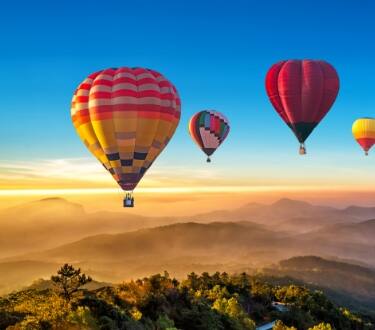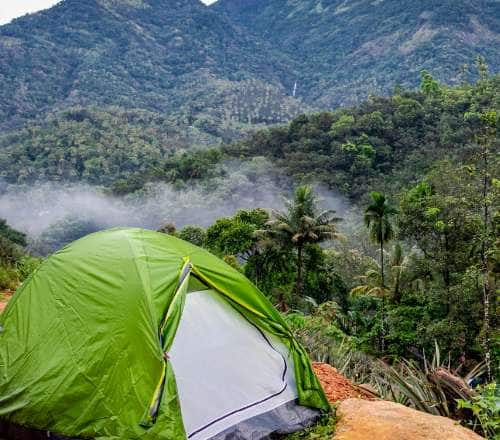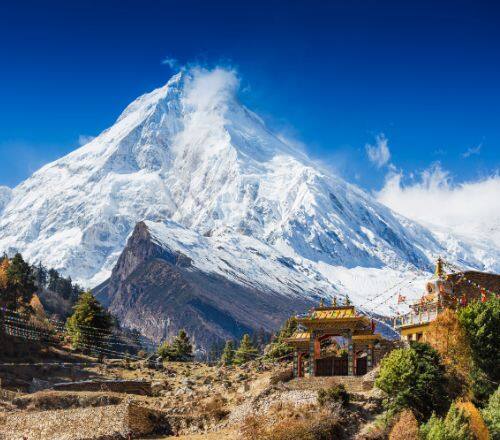Stay logged in to proceed with bookings, orders and offers.
On changing the terminal, you will loose items in your cart. Are you sure you want to change your terminal?
A personal account of visiting a natural wonder in the wilderness of north-east India.
If travel and adventure is what you seek, the double-decker root bridges in Meghalaya are a unique natural wonder that you don't want to miss. These bridges are made from living roots and are over 500 years old. They are found in the remote villages of the Khasi and Jaintia Hills, and can only be reached by hiking through dense forests and steep mountain trails. The bridges are made by threading the roots of the Ficus elastica across the river, allowing them to grow and strengthen over time. The process can take up to 15 years. But the result is a sturdy, living bridge that can support the weight of dozens of people at once, and I was on a journey to experience these bridges for the first time. I reached Cherrapunji a day before the hike and found a place to stay in the main market. The next day, I woke up at 5 am and got ready for the hike by 5.45 am, but found that the exit door of my hotel was locked. After knocking for 15 minutes, someone finally opened it.
Soon, I was on the street, where I asked a taxi driver about the fare to Tyrna—the last motorable place before the double-decker root bridges. He asked for Rs. 400 but was willing to take Rs. 250. However, I was in the mood to walk. I looked towards the east and saw the sun shining brightly. It was six in the morning and I began walking along the meandering roads amid the grasslands, the smoking shacks in the Mawluh village, and the large cement factory. As I strolled along a dense green serpentine stretch, all forms of civilisation disappeared . A few vehicles went past me, but I found not a single soul around. The vegetation was exotic and I wondered what it would be like when it rained—it would probably be like a trek in the rainforest. After walking about 16-17 km, I reached Tyrna at 9 am. It was quick as the journey was downhill. In the village, there was a small tea joint just before the never-ending steps began. I relaxed for 15-20 minutes, ate Maggi, and geared up for climbing down.
As I walked down the steps, I passed through a picturesque village with lovely fat cats everywhere. Tall, thin betel nut trees added to the beauty of the path. The steps went on and on and on. After 3,500 steps, I finally reached a small village with two boards—one pointing to the longest single-root bridge, and another towards the double-root bridge. I walked towards the double-root bridge. I found a few locals midway, but no other travellers. By now, I was sweating profusely, but the bridge was nowhere to be found. I met a villager who was plucking a beehive to collect honey. The man barely had any clothing on him, and told me that he was a professional at the task. Three children sat close by, trying to learn his trick. After a few minutes, I reached a bridge made only of iron wires. From the bridge, I could see the river and the boulders below as I swing-walked my way to the other side. There was an enclosure in the river where the water was blue like copper sulphate, probably due to the presence of some chemical. I enjoyed the swinging bridge. It was not too long before another bridge of much greater length was before me. On the other end of the bridge was a room for rest, and the first living root bridge. Since I was tired, I went under the bridge and sat on a rock, watching a stream flowing through the other side. I was taking a few photographs when a man came along, with a warm smile on his face.
He told me that he was travelling alone and had found no one on the way. He had also come across the guy collecting honey who had told him that another person (that's me) had gone past half an hour ago. I later found out his name—Amol—and that he was an engineer from Mumbai. Soon we were at the double-decker living root bridges. A stream flowed from the other side. Before we could walk across, we were charged a nominal fee of Rs. 5 to visit the bridges. The area was surrounded by beautiful butterflies and it was the perfect opportunity to take pictures. As we explored the area, I realised that I was yet to get on top of the bridge. I took the opportunity to experience the no-iron, no-mortar structure. After enjoying the bridges, Amol and I decided to climb back to Tyrna. However, midway through the climb, Amol expressed his desire to swim in the blue lake.
After our refreshing dip, we continued our climb and reached the village where there was another route to the longest bridge. We bought oranges for the rest of the climb and made our way toward the never-ending stairs. I was suffering from fatigue, and Amol helped in carrying my heavy camera for a good part of the way. However, I was still taking frequent breaks and slowing him down. So, I let him move ahead and rested for a while. With trembling legs, I reached the tea point, where I met Amol and his cab driver. They had no idea of the distance I had covered and made fun of my sweaty, tired condition. It was only later that they learned that I had walked from Cherrapunji to the bridge. They were amazed. We reached Sohra, where I checked out and joined Amol for the drive back to Shillong. Visiting the double-decker root bridges was not just a great adventure travel experience, but was also a lesson in sustainability and eco-friendliness. Bridges are a prime example of how humans can work with nature to create something beautiful and functional without damaging the environment. They are a testament to the ingenuity and resourcefulness of the people who call this region home, and a stunning example of the power of nature to create something truly unique and inspiring.





The Adani One expressly disclaims all liability, direct and indirect, in respect to actions taken or not taken based on any or all the contents of this Blog. The Blog is an opinion of the contributor based on the collation of data from various sources and is provided only for information purpose. Adani One does not canvass, advertise, solicit, invite or induct for any product, merchandise, information, brand or any other materials mentioned in the Blog, nor does it obtain any monetary benefit from the same. Reader is advised to read and apply his/her intellect and discretion in this regard. Any Intellectual Property mentioned in this blog belongs to the rightful owner. We do not intent to claim any interest over the same.